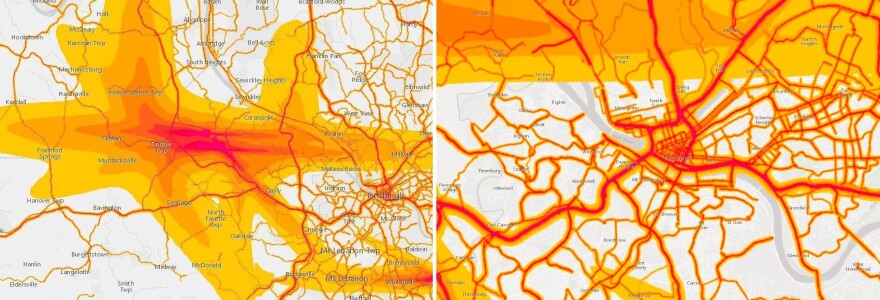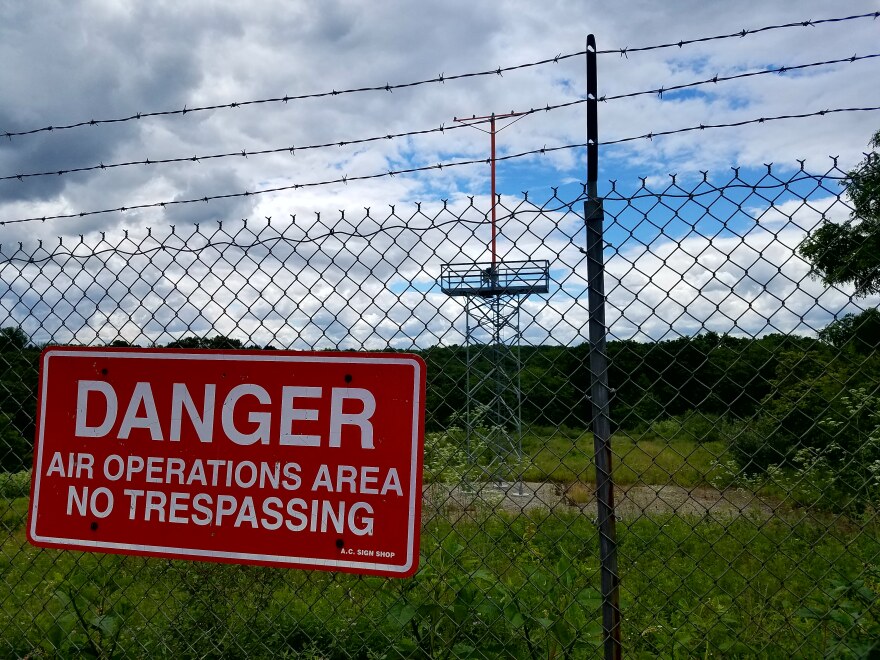Honking car horns, screeching tires and the thunderous rumble of truck engines surround passersby on East Ohio Street. The street, while not Pittsburgh’s busiest, is among the noisiest.
The North Side overpass is in the heart of an interchange that dips below the Veterans Bridge and passes above Interstate-279. The stretch of road is definitely loud, especially during the afternoon rush.
Good Question! listener Eileen, of St. Clair, was thinking about noise while watching the Stanley Cup playoffs, and asked “what is the noisiest place in Pittsburgh?”
“Every time the game was at Bridgestone Arena [in Nashville], the announcers always made a point to talk about how loud it was in there and that just started me thinking what the loudest place in Pittsburgh was,” she said.
Stephen Roth, an acoustical engineer at Roth Acoustical defines noise as “unwanted sound.” He conducts noise studies and makes recommendations for businesses that are required to comply with noise ordinances, such as restaurants and music venues.
“Some people are very sensitive to noises and some are not so sensitive to noises,” Roth said. “Sensitivity to sound plays an awful lot into whether there is going to be a community noise complaint or not.”
Roth said he believes the noisiest places in Pittsburgh on an on-going basis would be areas located near traffic noise and construction sites. The key factor here is noise that is on-going. This excludes one-time occasions such as concerts, parades and sporting events.
Sound is measured in units called decibels and the greater the average decibel reading, the louder the sound. For reference, a typical office measures about 50 decibels:
Starting a car measures about 68 decibels:
Roth’s firm consults with businesses on their sonic impact, particularly those that operate in areas that have adopted a noise ordinance to ensure compliance.
“We turn the noise analyzer on, using the appropriate settings and measure the noise that’s coming from the offending source, recording those noises and then play them back to a computer,” Roth said.
This is part of our Good Question! series where we investigate what you've always wondered about Pittsburgh, its people and its culture.
Software analyzes the recordings and comes up with an average reading. Pittsburgh's noise ordinance, for example, prohibits noise in a residential area above 55 decibels during nighttime hours and 65 decibels during the day.
Data using this process is compiled by the Bureau of Transportation Statistics and mapped. Airports, for example, are required to regularly report their impact and forecast the next five years’ worth of noise averages.
The map rates sounds from a pale yellow at the quiet end to a bright blue for noises reaching greater than 90 decibels.
Highways like the Parkway and Pennsylvania Turnpike sprawl across the map like red spidery veins. East Ohio Street is a light purple patch, the Fort Pitt Tunnel is a darker shade of purple and Downtown Pittsburgh’s cross streets are strings of pink.

Pittsburgh International Airport lights up on the far end of the spectrum. It has a noise footprint surrounding it that stretches for 40 miles from east to west and 27 miles from the north to south. The runways at the airport are highlighted in a bright blue and are the most deafening place in the region.

According to a study at Perdue University, jet engines average between 100 and 150 decibels, depending on the size of the plane. Pittsburgh International sees an average of 180 flights per day, which explains the bright blue outlines.
Luckily, no one lives anywhere near the runways.
What have you always wondered about the Pittsburgh region? Submit to our Good Question! series and we’ll go investigate and find answers.





